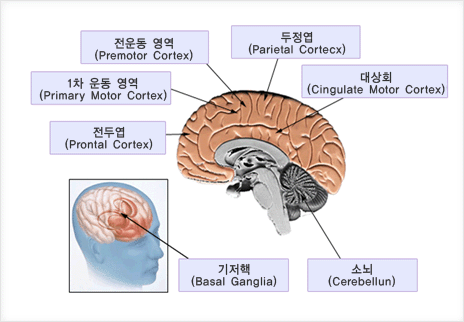There is an ever-expanding body of peer-reviewed literature that clearly demonstrates the link between mental timing and our cognitive processing and motor capabilities. The two studies listed in red font are especially helpful in illustrating the relationship between temporal processing and the Interactive Metronome.
1.Agnew, J. A., Dorn, C., & Eden, G. F. (2004). Effect of intensive training on auditory processing and reading skills. Brain and Language, 88(1), 21-25.
2.AlonsoBua, B., Diaz, F., & Ferraces, M. J. (2006). The contribution of AER-Ps (MMN and LDN) to studying temporal vs. linguistic processing deficits in children with reading difficulties. International Journal of Psychophysiology, 59(2), 159-167.
3.Au, A., & Lovegrove, B. (2001). The role of visual and auditory temporal processing in reading irregular and nonsense words. Perception and Psychophysics, 30(9), 1127-1142.
4.Boets, B., Wouters, J., vanWieringen, A., & Ghesquiere, P. (2006). Auditory temporal information processing in preschool children at family risk for dyslexia: Relations with phonological abilities and developing literacy skills. Brain and Language, 97(1), 64-79.
5.Breier, J. I., Fletcher, J. M., Foorman, B. R., Klaas, P., &Gray, L. C. (2003). Auditory temporal processing in children with specific reading disability with and without attention deficit/hyperactivity disorder. Journal of Speech Language and Hearing Research, 46(1), 31- 42.
6.Cacace, A., McFarland, D., Ouimet, J., Schriber, E., &Marro, P. (2000). Temporal processing deficits in remediationresistant reading-impaired children. Audiology and Neurotology, 5(2), 83-97.
7.Cestnick, L., & Jerger, J. (2000). Auditory temporal processing and lexical/nonlexical reading in developmental dyslexics. Journal of the American Academy of Audiology, 11(9), 501-513.
8.Cohen-Mimran, R. (2006). Temporal processing deficits in Hebrew speaking children with reading disabilities. Journal of Speech Language and Hearing Research, 49(1), 127- 137.
9.Conlon, E., Sanders, M., & Zapart, S. (2004). Temporal processing in poor adult readers. Neuropsychologia, 42(2), 142-157.
10.David, D., Wade-Woolley, L., Kirby, J., & Smithrim, K. (2007). Rhythm and reading development in school-age children: a longitudinal study. Journal of Research in Reading, 30(2), 169-183.
11.DeMartino, S., Espesser, R., Rey, V., & Habib, M. (2001). The ''temporal processing deficit'' hypothesis in dyslexia: New experimental evidence. Brain and Cognition, 46(1-2), 104-108.
12.Droit-Volet, S. & Rattat, A. (2007). A further analysis of time bisection behavior in children with and without reference memory: The similarity and the partition task. Acta Psychologica, 125, 240-256.
13.Eden, G., Stein, J., Wood, H., & Wood, F. (1995). Temporal and spatial processing in reading disabled and normal children. Cortex, 31(3), 451- 468.
14.Edwards, V., Giaschi, D., Dougherty, R., Edgell, D., Bjornson, B., Lyons, C., & Douglas, R. (2004). Psychophysical indexes of temporal processing abnormalities in children with developmental dyslexia. Developmental Neuropsychology, 25(3).
15.Farmer, M. E., & Klein, R. M. (1995). The evidence for a temporal processing deficit linked to dyslexia: A review. Psychonomic Bulletin and Review, 2(4), 460-493.
16.Fink, M., Churan, J., & Wittmann, M. (2006). Temporal processing and context dependency of phoneme discrimination in patients with aphasia. Brain and Language, 98(1), 1- 11.
17.Fortin, C., Champagne, J., & Poirier, M. (2006. Temporal order in memory and interval timing: An interference analysis. Acta Psychologica (in press).
18.Gang, M., & Siegel, L. S. (2002). Sound-symbol learning in children with dyslexia. Journal of Learning Disabilities, 35(2), 137-157.
19.Goswami, U. (2003). How to Beat Dyslexia: The Broadbent Lecture 2003. The Psychologist, 16(9), 462-465.
20.Griffiths, Y. M., Hill, N. I., Bailey, P. J., & Snowling, M. J. (2003). Auditory temporal order discrimination and backward recognition masking in adults with dyslexia. Journal of Speech Language and Hearing Research, 46(6), 1352-1366.
21.Hautus, M. J., Setchell, G. J., Waldie, K. E., & Kirk, I. J. (2003). Age-related improvements in auditory temporal resolution in reading-impaired children. Dyslexia, 9(1 ), 37-45.
22.Heath, S. M., & Hogben, J. H. (2004). Cost-effective prediction of reading difficulties. Journal of Speech, Language, and Hearing Research, 47, 751-765.
23.Heath, S. M., & Hogben, J. H. (2004). The reliability and validity of tasks measuring perception of rapid sequences in children with dyslexia. Journal of Child Psychology and Psychiatry, 45(7), 1275- 1287.
24.Heim, S., Keil, A., & Ihssen, N. (2006). The relationship between temporal attention and literacy skills in classroom children. Zeitschrift Fur Psychologie, 214(4), 196- 206.
25. Helmbold, N., Troche, S. & Rammsayer, T. (2007). Processing of temporal and nontemporal information as predictors of psychometric intelligence: A structural-equation-modeling approach. Journal of Personality, 75 (5), 985-1006.
26.Hill, P. R., Hogben, J. H., & Bishop, D. M. V. (2005). Auditory frequency discrimination in children with specific language impairment: A longitudinal study. Journal of Speech Language and Hearing Research, 48(5), 1136-1146.
27.Hood, M., & Conlon, E. (2004). Visual and auditory temporal processing and early reading development. Dyslexia, 10(3), 234-252.
28.Kwak, E. (2007). Effect of Rhythmic Auditory Stimulation on Gait Performance in Children with Spastic Cerebral Palsy. Journal of Music Therapy, XLIV (3), 2007,198-216.
29.Laasonen, M., Service, E., & Virsu, V. (2002). Crossmodal temporal order and processing acuity in developmentally dyslexic young adults. Brain and Language, 80(3), 340- 354.
30.Lewis, P. & Miall, C. (2006). Remembering the time: a continuous clock. Trends in Cognitive Sciences, 10(9)
31.Mauk, M. & Buonomano, D. (2004). The Neural Basis of Temporal Processing. Annual Review of Neuroscience, 27, 307-340.
32.McAnally, K. I., Castles, A., & Stuart, G. W. (2000). Visual and auditory processing impairments in subtypes of developmental dyslexia: A discussion. Journal of Developmental and Physical Disabilities, 12(2), 145- 156.
33.McGee et al. (2004). Time Perception: Does it Distinguish ADHD and RD Children in a Clinical Sample? Journal of Abnormal Child Psychology, Vol. 32, No. 5, October 2004, pp. 481?490.
34.Meck, W. Functional and Neural Mechanisms of Interval Timing (Methods and New Frontiers in Neuroscience). Chapman & Hall/CRC Press/Kluwer, 2003.
35.Meng, X. Z., Sai, X. G., Wang, C. X., Wang, J., Sha, S. Y., &Zhou, X. L. (2005). Auditory and speech processing and reading development in Chinese school children: Behavioural and ERP evidence. Dyslexia, 11(4), 292-310.
36.Muneaux, M., Ziegler, J., Truc, C., Thomson, J., &Goswami, U. (2004). Deficits in beat perception and dyslexia. Evidence from French. Neuroreport, 15(7), 1-5.
37.Posner, M. & Rothbart, M. (2007). Research on Attention Networks as a Model for the Integration of Psychological Science, 58, 1-23.
38.Rayner, K., Pollatsek, A., & Bilsky, A. B. (1995). Can a temporal processing deficit account for dyslexia? Psychonomic Bulletin and Review, 2(4), 501-507.
39.Rey, V., DeMartino, S., Espesser, R., & Habib, M. (2002). Temporal processing and phonological impairment in dyslexia: Effect of phoneme lengthening on order judgment of two consonants. Brain and Language, 80(3), 576-591.
40.40. Richards, T.L. & Berninger, V.W. 2007. Abnormal fMRI connectivity in children with dyslexia during a phoneme task: Before but not after treatment. Journal of Neurolinguistics, Available online 17 August 2007. September 2007 news report
41.Rommelse, N., Oosterlaan, J., Fuitelaar, J., Faraone, S., & Sergeant, J. (2007). Time Reproduction in Children With ADHD and Their Nonaffected Siblings. Journal of the American Academy of Child Adolescent Psychiatry, 46, 5.
42.Santos, A., JolyPottuz, B., Moreno, S., Habib, M., & Besson, M. (2007). Behavioural and event- related potentials evidence for pitch discrimination deficits in dyslexic children: Improvement after intensive phonic intervention. Neuropsychologia, 45(5), 1080-1090.
43.SchulteKorne, G., Deimel, W., Bartling, J., & Remschmidt, H. (1999). The role of phonological awareness, speech perception, and auditory temporal processing for dyslexia. European Child &Adolescent Psychiatry, 8, 28-34.
44.Strehlow, U., Haffner, J., Bischof, J., Gratzka, V., Parzer, P., & Resch, F. (2006). Does successful training of temporal processing of sound and phoneme stimuli improve reading and spelling? European Child & Adolescent Psychiatry, 15(1), 19-29.
45.Talcott, J. B., Hansen, P. C., Assoku, E. L., & Stein, J. F. (2000). Visual motion sensitivity in dyslexia: evidence for temporal and energy integration deficits. Neuropsychologia, 38(7), 935-943.
46.Tallal, P. (2004). Improving language and literacy is a matter of time. Nature Reviews: Neuroscience, 5, 1-8.
47.Tallal, P. (2003). Language learning disabilities: Integrating research approaches. Current Directions in Psychological Science, 12(6), 206-211.
48.Tallal, P., & Gaab. N. (2006). Dynamic auditory processing, musical experience and language development. Trends in Neurosciences, 29(7), 382-390.
49.Taub, G., McGrew, K. & Keith, T. (2007). Improvements in interval time tracking and effects on reading achievement. Psychology in the Schools, 44 (8), 849-863.
50.Thaut, M., Kenyon, G., Hurt, C., McIntosh, G., & Hoemberg, V (2002). Kinematic optimization of spatiotemporal patterns in paretic arm training with stroke patients. Neuropsychologia, 40, 1073-1081.
51.Ulbrick, P., Churan, J., Fink, M., & Wittman, M. (2007). Temporal reproduction: Further evidence for two processes. Acta Psychologica, 125, 51-65.
52.Valdois, S., Bosse, M. L., & Tainturier, M. J. (2004). The cognitive deficits responsible for developmental dyslexia: Review of evidence for a selective visual attentional disorder. Dyslexia, 10(4), 339-363.
53.Van Ingelghem, M., van Wieringen, A., Wouters, J., Vandenbussche, E., Onghena, P., & Ghesquiere, P. Psychophysical evidence for a general temporal processing deficit in children with dyslexia. Neuroreport, 12(16), 3603-3607.
54.Vatakis, A. & Spence, C. (2007). Evaluating the influence of the ‘unity assumption’ on the temporal perception of realistic audiovisual stimuli. Acta Psychologica (in press).
55.Virsu, V., Lahti-Nuuttila, P., & Laasonen, M. (2003). Crossmodal temporal processing acuity impairment aggravates with age in developmental dyslexia. Neuroscience Letters, 336(3), 151-154.
56.Walker, M. M., Givens, G. D., Cranford, J. L., Holbert, D., & Walker, L. (2006). Auditory pattern recognition and brief tone discrimination of children with reading disorders. Journal of Communication Disorders, 39(6), 442-455.
57.Wearden, J. (2004). Decision processes in models of timing. Acta Neurobiologiae Experimentalis, 64.
58.Wong, P., Skoel, E., Russo, N., Dees, T., & Kraus, N. (2007). Musical experience shapes human brainstem encoding of linguistic pitch patterns. Nature Neuroscience.


